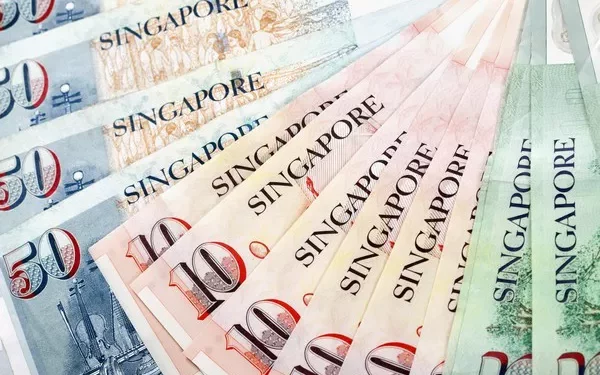Singapore is often regarded as one of the world’s most dynamic and stable economies. Central to this stability is its monetary policy framework, which is intricately linked to its currency management. Understanding whether Singapore’s currency is pegged is crucial for investors, policymakers, and economists alike. This article will delve into the nuances of Singapore’s monetary policy, its currency management strategy, and the implications for the global financial landscape.
Overview of Singapore’s Monetary Policy
Historical Context
The Monetary Authority of Singapore (MAS), established in 1971, is the central bank and financial regulatory authority of Singapore. Its mandate encompasses the formulation of monetary policy, financial sector regulation, and the promotion of financial stability. Historically, Singapore adopted a fixed exchange rate system in the early years of independence but transitioned to a managed float system as the economy evolved.
Current Framework
Today, Singapore’s monetary policy is characterized by a managed float regime. The MAS does not peg the SGD to any specific currency but allows it to fluctuate within an undisclosed policy band. The MAS actively manages the SGD’s nominal effective exchange rate (NEER) to achieve its primary goal: price stability.
Understanding the Managed Float System
Definition and Mechanism
In a managed float system, the currency is not fixed but is subject to interventions by the central bank. The MAS utilizes this approach to maintain a competitive exchange rate while safeguarding price stability. The central bank monitors economic indicators and adjusts the SGD’s nominal effective exchange rate as necessary.
Policy Band and Interventions
The MAS does not publicly disclose the exact width of the policy band within which the SGD is allowed to fluctuate. However, it is known that the MAS intervenes in the foreign exchange market to smooth out excessive volatility and ensure that the SGD remains within the intended range. These interventions can take the form of direct buying or selling of SGD in the foreign exchange markets.
The Role of the SGD in Global Finance
Singapore as a Financial Hub
Singapore has established itself as a premier financial center in Asia, attracting multinational corporations and investors worldwide. The SGD plays a pivotal role in this ecosystem, serving as a primary currency for transactions, investments, and hedging strategies.
Trade and Investment Considerations
Given Singapore’s status as a major trading nation, the SGD’s exchange rate has significant implications for trade competitiveness. A stable and predictable exchange rate enhances investor confidence and facilitates cross-border transactions. Furthermore, the MAS’s proactive stance in managing the SGD contributes to the overall attractiveness of Singapore as an investment destination.
Factors Influencing the SGD’s Value
Economic Indicators
The value of the SGD is influenced by various economic indicators, including inflation rates, GDP growth, and trade balances. The MAS carefully monitors these indicators to adjust its monetary policy stance as needed.
See Also: Who Is the Man on the Singapore Dollar?
Global Economic Conditions
As a small, open economy, Singapore is particularly sensitive to global economic conditions. Changes in major economies, such as the United States and China, can have a significant impact on the SGD’s value. For instance, shifts in U.S. interest rates or geopolitical tensions can lead to volatility in the foreign exchange markets.
Currency Pegging vs. Managed Float: A Comparative Analysis
Advantages and Disadvantages
While a currency peg can provide stability and predictability, it also exposes a country to external shocks. In contrast, a managed float system offers flexibility, allowing for adjustments based on economic conditions. However, it requires vigilant monitoring and timely interventions by the central bank.
Case Studies: Countries with Pegged Currencies
Countries such as Hong Kong and Saudi Arabia maintain pegged currencies, which provide stability but can lead to challenges during economic downturns. For instance, the Hong Kong dollar is pegged to the U.S. dollar, limiting the central bank’s ability to respond to local economic conditions. In contrast, Singapore’s managed float system allows for greater adaptability.
Implications for Investors
Currency Risk and Hedging Strategies
For investors, understanding the SGD’s management framework is essential for assessing currency risk. The MAS’s active interventions can provide a level of stability, but investors should remain vigilant to global economic shifts that could impact the SGD.
Investment Opportunities
The stability of the SGD, coupled with Singapore’s robust economic fundamentals, presents various investment opportunities. Investors may consider Singaporean equities, bonds, and real estate as viable options, supported by the SGD’s managed float system.
Conclusion
In summary, Singapore’s currency, the Singapore dollar, is not pegged but is managed within a flexible framework designed to ensure price stability and competitiveness. The MAS’s proactive approach to currency management plays a crucial role in maintaining Singapore’s status as a leading global financial center. As the global economic landscape continues to evolve, investors and policymakers must remain attuned to the implications of Singapore’s monetary policy for the SGD and the broader financial ecosystem.
Related Topics:



























